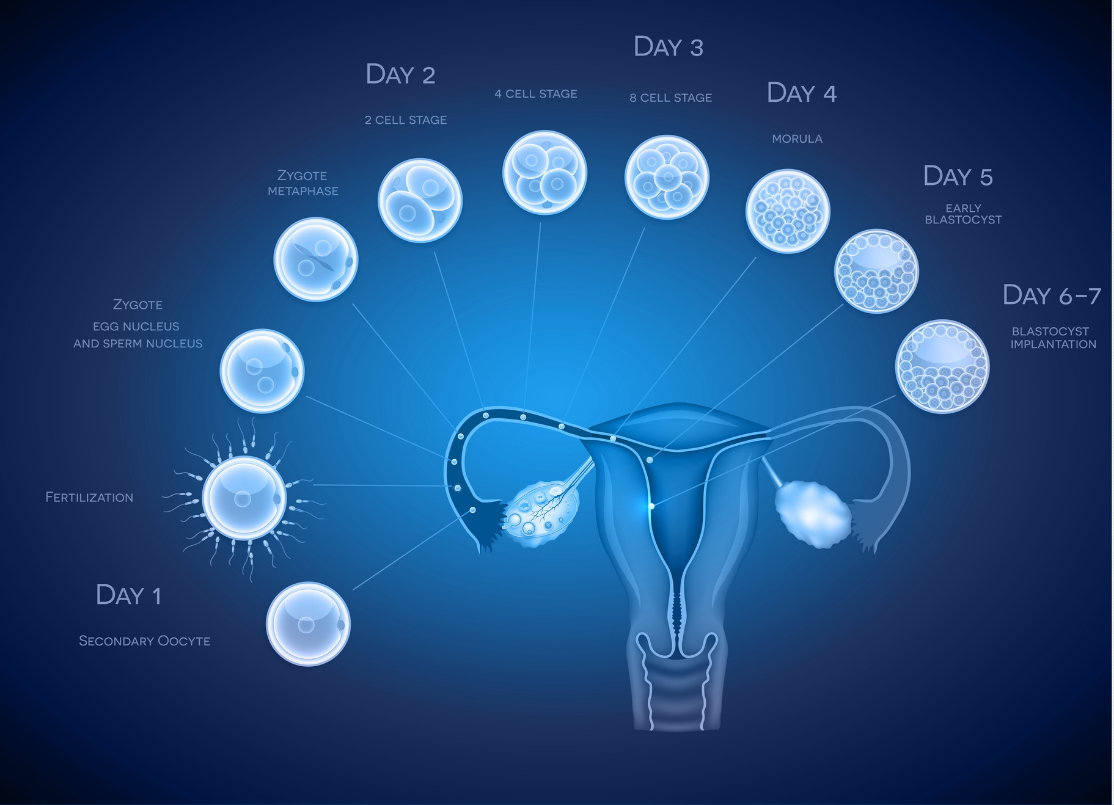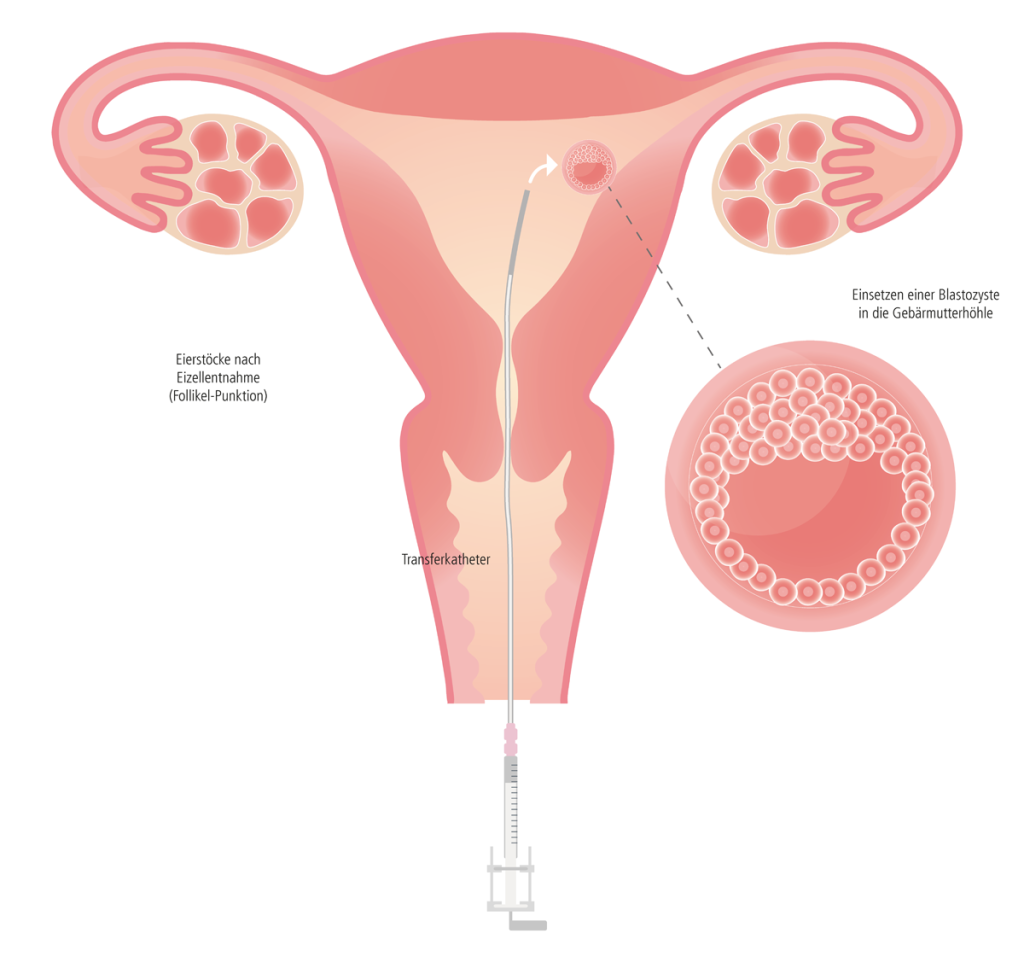
The days following an embryo transfer are filled with anticipation, hope, and a mix of emotions. Patients often look for positive signs indicating a successful implantation and pregnancy. While every journey is unique, understanding the common experiences can provide reassurance. In this blog post, we delve into the cramping positive signs after embryo transfer, what to expect daily, and how to navigate this pivotal time in your fertility journey.
Positive signs after embryo transfer refer to symptoms positive signs after embryo transfer, which suggest successful implantation of the embryo in the uterine lining. However, it is crucial to note that not all patients experience these signs, and their absence does not necessarily indicate an unsuccessful procedure. Typical positive signs include:
– Mild Cramping: A sign of uterine activity and possible implantation.
– Spotting or Light Bleeding: Often called implantation bleeding, this occurs when the embryo attaches to the uterine wall.
– Fatigue: Hormonal changes and early pregnancy symptoms can cause tiredness.
– Breast Tenderness: Increased hormone levels may lead to soreness or swelling.
– Heightened Sense of Smell: Early pregnancy hormones might make certain smells more noticeable.
Cramping is a particularly common symptom that many patients associate with positive signs after embryo transfer. For some, mild cramps can occur intermittently, signaling that the uterus is preparing for a potential pregnancy.
 Positive Signs After Frozen Embryo Transfer
Positive Signs After Frozen Embryo TransferPatients undergoing frozen embryo transfer may wonder if their symptoms differ from fresh embryo transfers. The positive signs after frozen embryo transfer often overlap, including cramping, spotting, and breast tenderness. Additionally, twinges or sensations in the lower abdomen may provide reassurance. Remaining patient and attentive to your body during this time is essential.
The two-week wait after embryo transfer is filled with potential signs and symptoms that vary day by day. Here’s what you might expect during this time:
On the first day, the embryo begins its journey toward implantation. Patients may feel no immediate symptoms as the embryo floats within the uterus. Rest and hydration are recommended to support this initial phase.
By the second day, the embryo is preparing to attach to the uterine lining. Some patients report mild bloating or a sense of fullness in the lower abdomen, but these symptoms are subtle.
The embryo starts to burrow into the uterine lining on the third day. Mild cramping or light spotting could be signs of this implantation process. Hormonal shifts might also cause mood changes or fatigue.
On the fourth day, patients might notice mild twinges or sensations in the lower abdomen. These are often regarded as early implantation symptoms and are considered positive signs. If you feel twinges related to embryo transfer, it could be a subtle indicator of uterine activity.
The embryo’s attachment to the uterine lining is becoming firmer by day five. Some individuals experience mild cramping, breast tenderness, or an increase in cervical mucus. Day 5 after embryo transfer symptoms are often encouraging and may include a heightened sense of smell.
Some individuals also report left side lower abdomen pain after embryo transfer, which could be linked to uterine activity or hormonal adjustments. Day six marks a significant stage where hormone levels begin to rise if implantation has occurred. Symptoms like nausea, fatigue, or a heightened sense of smell may develop. Some patients report left-side lower abdomen pain after embryo transfer, which could indicate uterine changes.
By the seventh day, the body is starting to produce detectable levels of the pregnancy hormone hCG. Symptoms such as mood swings, cramping, or spotting may become more noticeable. These 7 days after embryo transfer symptoms can vary but are often promising. For some, brown discharge after embryo transfer on this day might signal implantation bleeding.
Day 8 after embryo transfer is a crucial time when patients may notice specific changes, such as mild abdominal cramping or shifts in hormonal levels. On day eight, some individuals experience noticeable changes such as breast tenderness, mild abdominal cramps, or even vivid dreams. These 8 days after embryo transfer symptoms might indicate hormonal shifts related to pregnancy. Monitoring your symptoms can provide reassurance during this waiting period.
Day nine often brings further signs of hormonal changes. Symptoms may include bloating, nausea, or heightened sensitivity to smells. Some patients may feel encouraged to take a pregnancy test, though results can still be inconclusive at this stage.
By the tenth day, patients might notice symptoms such as period-like cramps or mood swings. It’s essential not to confuse these with premenstrual symptoms. Spotting after embryo transfer day 11 or on day 10 could be implantation bleeding rather than the onset of a period. Period pains on this day are often mild and transient.
Day eleven is often the recommended time for an initial pregnancy test after embryo transfer. If implantation has been successful, hCG levels might be high enough to yield a positive result. It’s best to use a blood test for accurate results. Pregnancy test after embryo transfer results on this day can bring clarity to many patients.
By day twelve, symptoms like fatigue, nausea, or breast tenderness might intensify. These day 12 after embryo transfer symptoms often reflect the body’s adjustment to rising pregnancy hormone levels. For some, cramps after embryo transfer may persist but remain mild.
The most common symptoms after embryo transfer include:
– Spotting or Light Bleeding: This could be a sign of implantation bleeding.
– Mild Cramping: Often described as twinges or mild period-like pain.
– Fatigue: Hormonal changes can cause a noticeable decrease in energy levels.
– Breast Sensitivity: Tenderness, swelling, or changes in nipple appearance are common.
– Increased Vaginal Discharge: Cervical mucus changes may indicate early pregnancy.
Brown discharge after embryo transfer may also occur and is often associated with implantation. These symptoms are not definitive indicators of pregnancy but may provide some reassurance during the waiting period.
The two-week wait (TWW) is the time between embryo transfer and the scheduled pregnancy test. For many, this period is filled with anticipation, hope, and sometimes anxiety. Understanding what to expect and how to handle the emotional and physical aspects of this phase can help make the wait more manageable.
Engaging in light activities, staying hydrated, and focusing on a healthy diet rich in nutrients can be beneficial. Emotional support from loved ones or fertility groups may also provide reassurance. Avoiding excessive stress during this period is vital to your overall well-being.
Two weeks after embryo transfer, most patients are considered four weeks pregnant. This calculation includes the two weeks added before ovulation as part of standard pregnancy dating. If you’re 2 weeks after embryo transfer, your fertility clinic can confirm your pregnancy timeline based on your procedure date.
Cramping and abdominal discomfort are common after embryo transfer and are often a positive sign of implantation. Mild to moderate cramps are typically normal, but severe or persistent pain should be reported to your doctor immediately. Twinges after embryo transfer and other mild sensations in the abdomen may indicate uterine changes as the embryo implants.
The period following embryo transfer is a hopeful yet emotional time. Positive signs such as cramping, spotting, and fatigue may indicate successful implantation, but every journey is unique. Clinics like Cyprus IVF clinic provide expert care and guidance, ensuring patients feel supported every step of the way. By staying informed and connected with your fertility specialist, you can navigate this journey with confidence and peace of mind.
Remember, it’s essential to care for your mental and physical health during this period. Small daily routines, journaling, and mindfulness practices can help maintain balance. Trust in the process and reach out for support whenever needed to make this time as comfortable as possible. Additionally, take comfort in knowing that each step you take brings you closer to understanding your fertility journey and achieving your desired outcomes. Embrace positivity and seek help when needed, as this journey is not one you have to navigate alone.